Leaving the Mud Bath Salon Behind &
Becoming a Fruit Tree Slum Lord
Part two of: My journey to becoming an urban orchardist
(Read Part 1 HERE)
By Janis Norton
Do you remember my plans to be an urban orchardist? I am not an expert yet, but one thing I do know about fruit trees is they don’t like to swim. And, I admit earlier this year I was pushed to act quickly to get my dozen plus trees out of the accidental mud bath I built for them. I needed to fix their forever home and, until that was ready, devise a good temporary plan for short term housing. Everyone knows high temperatures are not good for trees; however, living just outside of Phoenix, I had plenty coming my way. This is my tale of how I became a Fruit Tree Slum Lord.
The “mud bath” rescue was done in a rush because I was worried about letting them drown waiting for the weekend which was my husband’s next day off. I needed help, and only a couple days after we finished planting that set of young trees, I called my dear friend in a panic and told him it was time to do an emergency operation on my orchard.
After we were done, these stunned trees were sitting in large plastic planters mere inches above their promised homes. I am sure it was a form of cruel and unusual punishment to be so tantalizingly close to sweet ground. If there was such a thing as a tree union, there were probably some serious discussions about a strike or even a walk-out, and I would not doubt the apricot would be the instigator.
Anyway, all this planting and un-planting happened in the middle of the busy season for the Pop-up Nursery in our Urban Farm Fruit Tree Program. If you happened to be someone who came by our lot, you knew I was crazy busy helping Greg adopt out a few thousand fruit trees. Back home in my own personal orchard, I knew I had a big project to either break through a massive layer of caliche (a natural subterranean concrete-like layer) or create a whole new orchard space. Seriously, when was I going to find the time?
I pulled out my calendar and realized the next opportunity for serious work in my future orchard was after warmer days would arrive, and definitely after the ground started warming up. I was fully aware if I tried putting the trees in the ground in May, June or even July, I ran the risk of serious transplant shock. I was too new at this to tempt fate and my fruit tree first aid skills. There was no way around it, I had to put off planting my orchard until early winter.
When I made the announcement, I was not sure who was more disappointed, me or the trees. It was like promising a teenager they could drive the car “next time” and they give you the silent treatment. Yeah, a lot like that. I could feel the burn of a dozen or so tree eye rolls. Sigh.
~~
So, the next problem to tackle was creating a safe temporary place for these young trees to live out the summer. My mental plan for permanent homes was slowly taking shape, but it was going to take time and a lot of good dirt and soil – neither of which I had at this point.
We do a lot of teaching at The Urban Farm about how important it is to protect the roots of the trees – especially in the desert. I already had a lot of wood chips in my yard – but not enough to protect my vulnerable tree family now that they were sitting above ground level in those pots. I have heard Greg counsel many a new tree owner about how their trees suffer in excess heat unless the roots are protected – and my trees, sitting that high, in a yard with no canopy trees, were going to get baked on all sides.
I initially moved the pots right next to the south wall. That worked only for a few weeks until the sun’s arc shifted and they were getting baked again. There was no possible way they would survive a summer in my yard with no shade. My emergency solution was to drag all thirteen of those huge buckets to the east side of the house into a narrow pathway between my house and the cinder block wall I shared with my neighbor. Okay, let’s be honest here, I called my dear friend and HE did that for me (sometimes I am truly surprised he picks up the phone).
With the trees lined up against the house to take advantage of every inch of afternoon shade, it had become like a row of temporary apartments. With the north-south orientation of the narrow space, once the weather started warming up it developed a convection oven effect here between the house and the block wall.
It was not like I could offer nice housing with decent views and great amenities such as reliable water and central air. No, what I had done was created the tree version of tenement housing – crappy views of a block wall, noisy equipment kicking in at all hours, untenable temperatures, and even the water was lousy and unpredictable depending on my schedule. I had become a Fruit Tree Slum Lord.
Again, I found myself with more apologies and promises spewing forth in my attempt to stave off any trees giving up or moving out, and I needed to stop the grumbling whispers developing between the plums and the peaches. They acted like they understood, but I could barely look at myself in the mirror.
~~
My next worry, like any rental property owner in the desert, was summertime climate control. We have stringent HOA rules to consider, so one day in early April, my husband and I worked out a temporary shelter with an arching PVC pipe structure and a 20-foot-long section of shade cloth. We were required to keep it low to adhere to height restrictions and it could not be affixed to the walls, so this was not going to win any design awards.
The day we built the structure, we must have gone outside twenty times to check on how it was withstanding the occasional 8-12 mph wind gusts. Worried about any sudden lift, we tied the structure to the dirt heavy planters themselves as well as a few handy cinder blocks we had laying around.
There was a debate between the two of us for a little while; we could not agree on whether it was the wind, or if the apricot had organized enough support to hold a protest rally, because there was a bit of wall pounding going on when we were relaxing indoors. Finally catching the source of the disturbance, we ran to the store for a pool noodle to cut into pieces to cushion the PVC frame where it rested against the house. Strangely, it actually worked and the picketers were voiceless again.
~~
I am determined to keep this crew happy, and I even moved in some great neighbors like all my potted plants including the veggies I could not give up on when I emptied the raised bed garden. My tenement housing row is a little crowded, but the community is supporting each other and my daily visits seem to keep their spirits up for now. I’m proud to say the apples are being excellent examples to the whole group by tempering the apricot’s sully mood. And that fig, well she is going to be a rock star someday as her joyful attitude is catchy!
My story is not finished and I still have a few months until I can relocate the trees to their permanent home. How will we survive the occasional haboob that might pop up this summer? Can I get heavy equipment into the backyard or is this going to be a project for wheelbarrows and shovels? Is my dear friend going to block my number? Stay tuned for those answers as I am determined to throw off this slumlord title and I am going to build an orchard home worthy of a Class A rating.
Next step… High Rise Construction in the desert?
 Janis is a graduate of the Arizona State University, School of Sustainability, earning her BS in Sustainability. And although she had a strong focus to find opportunities to help educate and strengthen her communities in sustainability methods, she did not realize how much she could do with the local food system until her Sustainable Food and Farms class. All previous misconceptions of having a black thumb were no longer obstacles. She became motivated to learn all she could about gardening and urban farming. Then she used her organization and project management skills to help facilitate a couple of the Urban Farm larger events. From that point on, she has been an active part of the Urban Farm team. She is bringing her enthusiasm and cheerful attitude to her projects at the Farm especially the Annual Fruit Tree Program and the Urban Farm Podcast, as well as the Great American Seed-Up which is a partner project with GrowPhx.
Janis is a graduate of the Arizona State University, School of Sustainability, earning her BS in Sustainability. And although she had a strong focus to find opportunities to help educate and strengthen her communities in sustainability methods, she did not realize how much she could do with the local food system until her Sustainable Food and Farms class. All previous misconceptions of having a black thumb were no longer obstacles. She became motivated to learn all she could about gardening and urban farming. Then she used her organization and project management skills to help facilitate a couple of the Urban Farm larger events. From that point on, she has been an active part of the Urban Farm team. She is bringing her enthusiasm and cheerful attitude to her projects at the Farm especially the Annual Fruit Tree Program and the Urban Farm Podcast, as well as the Great American Seed-Up which is a partner project with GrowPhx.


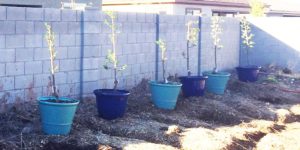

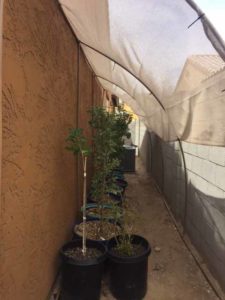
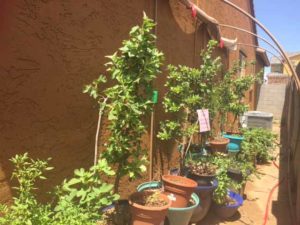
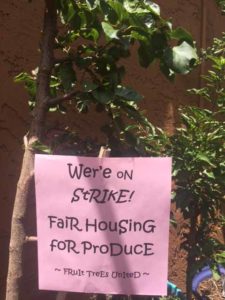




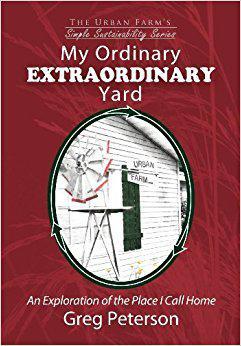
Thanks for sharing your experience. Great article!
Excellent story. I understand the trials and tribulations you have gone through and they can be heartbreaking. Becoming a fruit tree slumlord cannot be easy, especially when you had all the best intensions for your trees. The challenges you have faced are opportunities for learning and stories to share around the checkout table of the next pop-up nursery.
Too funny!! Bet they’re happy in their temporary digs — even your apricot union rep!